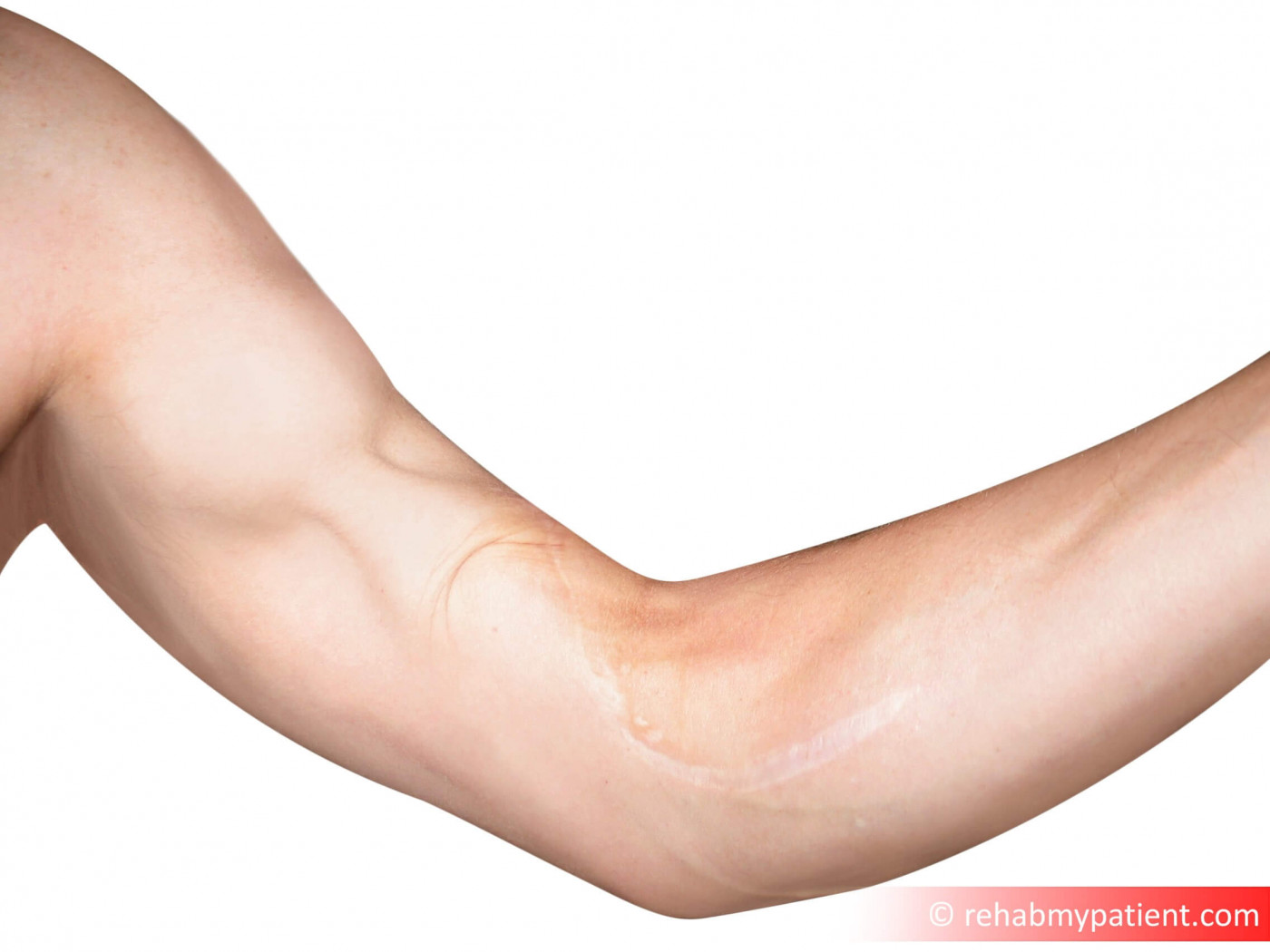Biceps Tendon Tear at the Elbow
Posted on 14th Jun 2017 / Published in: Elbow

The bicep is located at the front part of your upper arm. It allows you to bend your elbow and rotate the forearm, as well as keeping the shoulder stable. The tendons attach the muscles to the bones. The bicep tendon attaches the biceps to the bones in the elbow and the shoulder. If the biceps tendon tears at the elbow, you will lose the strength in your arm and not be able to turn your arm from palm up to palm down.
Depending on the severity of the tear, the bicep tendon may not grow back and heal on its own and this is certainly the case with a full rupture to the tendon. With a full rupture of the biceps tendon, you will form an odd looking lump in your arm and have significant bruising and weakness. Other arm muscles will step up to allow the elbow to bend fairly well without the bicep there. It won't be able to fulfill all of the functions, especially the motion of rotating the forearm from palm up to palm down. Substantial, permanent weakness during movement will occur if the tendon is not repaired surgically. The good news is though that a biceps tendon rupture at the elbow is very unusual, and the rupture more commonly occurs at the attachment to the shoulder.
Biceps Tendon Tear at the Elbow Anatomy
There are two tendons that attach the muscle to the bone within the shoulder and one tendon attaching at the elbow. The tendon of the elbow, known as the distal biceps tendon, attaches to the radial tuberosity. This small bump on the bone in your forearm is located near the elbow joint.


The photo shows a patient with biceps tendon rupture
How to Treat Biceps Tendon Tear at the Elbow:
- Surgical Treatment
Surgery is strongly recommended. Doctors will use a number of surgical procedures to reattach the biceps to the forearm. Depending on the doctor, some prefer using two incisions, while others will only use one. Sometimes the tendon will be attached with stitches by holes that are drilled into the bone. At other times, small metal implants will be used for attaching the tendon and the bone.
- Nonsurgical Treatment
Nonsurgical treatment might be an option for those who are classified as high-risk, which generally constitutes those who are inactive and elderly, or who have medical issues (e.g. heart problems) that make them a high-risk patient for surgery. Patients will need to weigh the decision to go with this carefully, as restoring the function later on with surgery is not an option. The tendon usually needs to be repaired within the first two to three weeks following the injury. If surgery is not done quickly, the biceps and tendon muscles will begin to shorten and scar. Even though there are other options available to those who request late surgical intervention for the injury, they tend to be more complicated and are not as successful.
Tips:
- Avoid heavy lifting
- Many people tend to grab the item without thinking, or realizing how much the item weighs. The risk is that the tendon will re-rupture or break free from the operated site. This is especially true if the tendon is previously degenerate, especially in the older-aged person.
- Nicotine use will affect the tendon's nutrition.
- Using corticosteroid medications has been shown to increase tendon and muscle weakness.
- Men, who are 30 years of age or older, tend to be the most susceptible to a distal bicep tendon tear.
- Forcing the elbow straight against resistance causes an injury to occur at the elbow.
- Following surgery, your arm will be placed in a bent position for a few weeks. Straightening your arm after its been bent for up to 6 weeks can be rather difficult, and you should go for therapy and have a strict exercise program to help re-gain the ability to straighten your arm.
Sign UP
Sign up for your free trial now!
Get started with Rehab My Patient today and revolutionize your exercise prescription process for effective rehabilitation.
Start Your 14-Day Free Trial